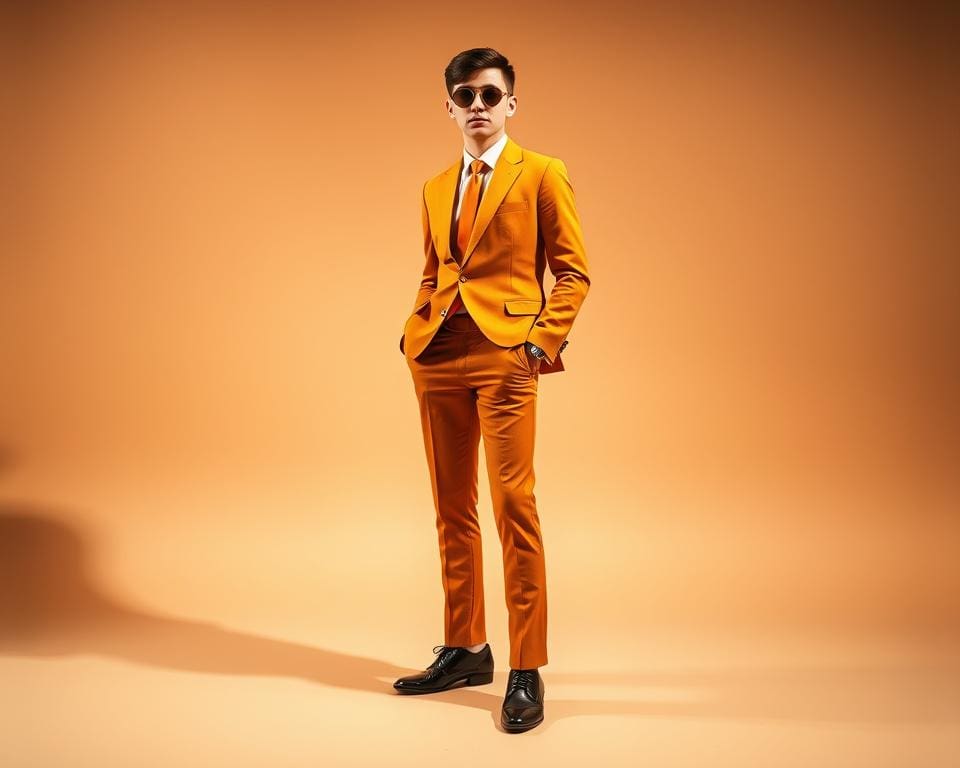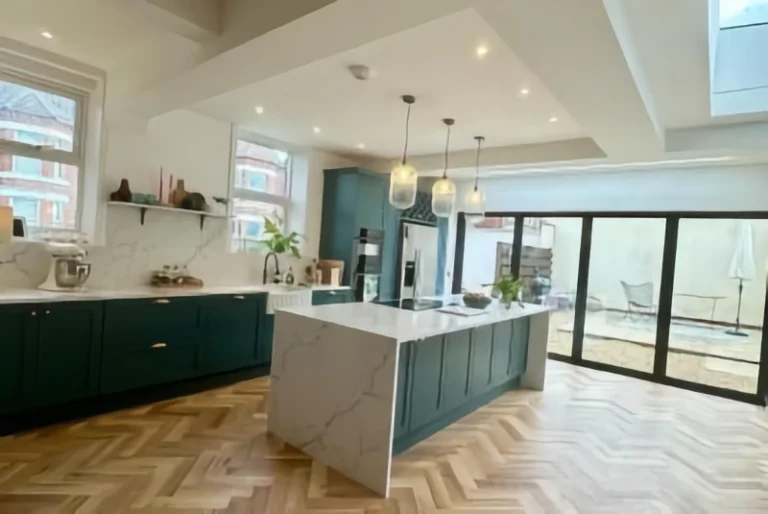Mod Fashion emerged as a vibrant youth subculture in the United Kingdom during the late 1950s, flourishing throughout the 1960s. Characterised by its sharp tailoring, striking colours, and an array of standout accessories, Mod Fashion represents a blend of style and substance. To understand what is Mod Fashion is to appreciate its bold statement against the conventional norms of the time. As explored in Richard Weight’s “Mod: A Very British Style”, it highlights the unique attributes of Mod culture, revealing its influential scope on fashion history and modern Mod Fashion trends.
This movement not only reflected a distinctive aesthetic but also encapsulated a way of life, making its mark in various aspects of culture that resonate to this day. With insights from Peter K. McMahon’s “The Fashion of Mod”, one can see how the principles of Mod styling continue to inspire and shape contemporary fashion, ensuring that the ethos of Mod Fashion remains ever relevant.
Understanding What Is Mod Fashion
Understanding what is Mod Fashion requires a look into its roots and visual essence. Originating in the late 1950s and flourishing in the 1960s, this subculture represents a unique confluence of artistic expression, musical innovation, and distinct lifestyle choices, ultimately shaping a significant aspect of British culture. Mod Fashion clothing is characterised by its sharp tailoring, vibrant colours, and sleek silhouettes. This emphasis on clean lines and stylish ensembles reflects the ambition to make a bold statement.
Central to the mod ethos is a blend of influences. The music of the era, particularly bands like The Who and The Kinks, played an essential role in defining the Mod aesthetic. These sounds inspired not just a musical movement but a whole way of life and expression. Additionally, the art of the period, marked by bold graphic designs and a forward-looking sensibility, shaped the Mod Fashion influences that permeated not just clothing but social attitudes as well.
Modern interpretations of Mod style can be seen in today’s fashion landscape, with contemporary designers drawing heavily on the aesthetics of this iconic era. Fashion archives serve as a testament to the adaptability of Mod Fashion, showing how its core principles continue to inform and inspire new generations of designers and fashion enthusiasts. Exploring what is Mod Fashion thus unveils an ongoing legacy, deeply rooted in cultural and artistic vibrancy.

Mod Fashion History
The journey of Mod Fashion encapsulates a vibrant era in British culture, with its roots steeped in the dynamic changes of the 1960s. This period marked a shift as young people, particularly in London, sought individuality through their style and musical tastes. The Mod Fashion subculture emerged as a distinctive response to previous youth movements, calling for a new identity defined by sharp fashion choices and a love for modern music.
The Origins in the 1960s
During the early 1960s, the Mod Fashion history traces back to a group of working-class youths in London. They were influenced by American jazz and rhythm and blues, as well as Italian designer brands. This youthful rebellion and pursuit of style were revolutionary. Young mods expressed their identity through tailored clothing, vibrant colours, and creative hairstyles. Their aesthetic not only reflected a desire to stand out but also served as an emblem of status in a shifting societal landscape.
The Role of London in Mod Culture
London played an instrumental role in shaping the Mod Fashion subculture. With its lively nightlife and kaleidoscope of music venues, the city became a breeding ground for mod expression. Iconic areas such as Carnaby Street and Soho became synonymous with the Mod movement, channelling the creative spirit of the times. Pioneering music acts like The Who and The Kinks amplified the mod ethos, merging style and sound into a cultural phenomenon. Through fashion and music, the narrative of Mod Fashion history unfolded, influencing generations and leaving a lasting legacy.
Key Elements of Mod Fashion Clothing
Mod Fashion clothing represents a blend of elegance and attitude, showcasing distinct characteristics that define this iconic style. Essential elements include tailored suits and sharp silhouettes, which form the foundation of the Mod aesthetic. The influence of tailoring in Mod culture cannot be overstated; it reflects a commitment to quality and craftsmanship. Accessories and footwear play a pivotal role, enhancing the overall look and adding that quintessential Mod flair. Expanding on these elements reveals how they contribute to the enduring appeal of Mod Fashion trends.
Tailored Suits and Sharp Silhouettes
At the heart of Mod Fashion clothing lies the tailored suit, often synonymous with the movement. These fitted garments are designed not just for style but also for expression, allowing individuals to present themselves with confidence. Sharp silhouettes take centre stage, often featuring clean lines and structured cuts. This emphasis on fit aligns with the aspirational nature of the Mod lifestyle, showcasing a desire to stand out without sacrificing sophistication. The three-piece suit, in particular, exemplifies this desire for refinement, making it a staple in any Mod-inspired wardrobe.
Signature Accessories and Footwear
To complete the Mod ensemble, signature accessories and footwear are indispensable. A classic parka or a Mod-style trench coat provides both functionality and flair, serving as a symbol of the movement’s roots. Footwear choices often include loafers and boots, which contribute to a polished yet approachable style. These pieces not only enhance the overall aesthetic but also represent the intersection of practicality and style that defines Mod Fashion trends. Each accessory and pair of shoes complements the tailored pieces, creating a cohesive look that captures the essence of the Mod spirit.
Influences of the Mod Fashion Subculture
The Mod Fashion subculture emerged from a vibrant blend of music, lifestyle choices, and visual art, significantly shaping its identity. This eclectic mix created a dynamic environment that influenced both the fashion of the time and the broader cultural landscape.
Music and Lifestyle Influences
Music served as the heartbeat of the Mod lifestyle. Iconic British rock bands like The Who and The Kinks not only provided the soundtrack but also inspired the fashion choices of their fans. The emergence of rhythm and blues, combined with the attitude of youthful rebellion, became essential elements of the Mod ethos. The rhythms of this era reflected in the tailored styles and sharp silhouettes that characterized Mod clothing choices. Music venues became communal spaces where the influence of style and sound intertwined seamlessly.
The Impact of Art and Design
The Mod Fashion subculture drew heavily from modernist design and visual art, incorporating these influences into their distinctive aesthetic. Elements from graphic design, architecture, and pop art found their way into clothing and accessories, resulting in bold and innovative styles. Artists like Peter Blake and Richard Hamilton had a significant impact, showcasing how art could merge with daily life. This creative exchange not only defined the visual language of Mod fashion but continues to inspire contemporary artists and designers today.
Mod Fashion Icons and Their Legacy
The world of Mod fashion is enriched by a number of influential figures whose styles and philosophies have infused the movement with life and spirit. Icons like Paul Weller, Twiggy, and David Bowie epitomise the essence of Mod culture, representing not only distinctive fashion but also a profound connection to music and art.
Paul Weller, known as the frontman of The Jam, helped shape the Mod revival in the late 20th century. His sartorial choices—sharp suits and neatly tailored jackets—illustrate classic Mod aesthetics, making him one of the enduring Mod Fashion icons. Weller’s influence stretches beyond clothing; his music resonates with the youth’s quest for identity and self-expression.
Twiggy emerged as a symbol of androgynous beauty during the 1960s, captivating audiences with her striking looks and unique style. Her influence on Mod fashion remains significant, as styles inspired by her continue to resonate within contemporary fashion. Twiggy’s ability to challenge traditional beauty norms reflects the Mod ethos of breaking boundaries.
David Bowie, with his eclectic style and innovative personas, added a layer of flamboyance to the Mod aesthetic. His daring fashion choices and musical versatility seamlessly merged high fashion with popular culture. Bowie transformed the landscape of Mod fashion by demonstrating that self-expression through clothing is a powerful statement.
These Mod Fashion icons have not only left a mark on their respective fields but have reinforced the importance of personal style and individualism. Their legacies inspire new generations, showcasing that the essence of Mod fashion is about embracing one’s unique identity and creativity.
The Revival of Mod Fashion Trends
The Mod Fashion revival is currently sweeping through contemporary clothing, as today’s fashion weeks and cutting-edge street style embrace classic Mod elements while infusing them with modern aesthetics. This resurgence highlights not only the cyclical nature of fashion but also how past styles can be revitalised to create fresh narratives for today’s audiences. As reported in “The Return of Mod: Trend or Timeless?”, the enduring appeal of Mod Fashion is rooted in the nostalgia it evokes, combined with the innovative spirit of today’s designers.
Leading fashion houses have begun to incorporate Mod Fashion influences into their collections, seamlessly blending tailored suits and sharp silhouettes with unique contemporary fabrics. This has led to a remarkable fusion of styles that pays homage to the original Mod ethos while propelling the movement forward. The Mod Fashion trends of today are characterised by a vibrant mix of bold patterns, striking colours, and elegant accessory choices, making them appealing to a new generation eager to express their individuality.
Furthermore, social media platforms have played a pivotal role in rekindling interest in Mod style, particularly among younger audiences. With platforms like Instagram and TikTok serving as showcases for vintage influences, the new wave of fashion enthusiasts is remixing these classic styles with current trends to create their own distinctive looks. This dialogue between past and present underscores the significance of the Mod Fashion revival in today’s fashion landscape, proving that timeless styles can indeed pave the way for future innovations.









